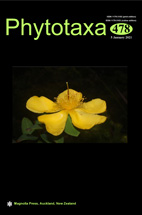Abstract
Chrysophyllum lancisepalum is here in described and illustrated as a new endemic species from the Atlantic forest in Brazil. Chrysophyllum lancisepalum is morphologically similar to C. januariense and C. sierpense, but distinguished by its chartaceous leaves, short petiole, attenuated leaf apex, rounded to obtuse leaf base, lanceolate sepals, fusiform fruit, and a seed with a basi-ventral seed scar. The new species is restricted to the states of Bahia and Espírito Santo, where it preferably grows in the Mussununga ecosystem, which is characterized by a coastal tableland geomorphology. Considering the vulnerability of C. lancisepalum and its very restricted occupation area, we suggest a preliminary conservation status in the Endangered (EN) category, according to the IUCN criteria.

